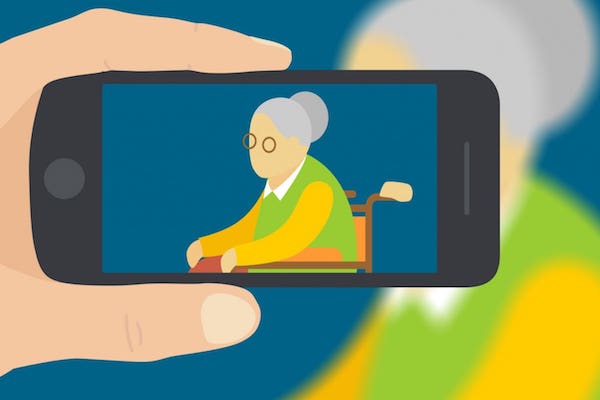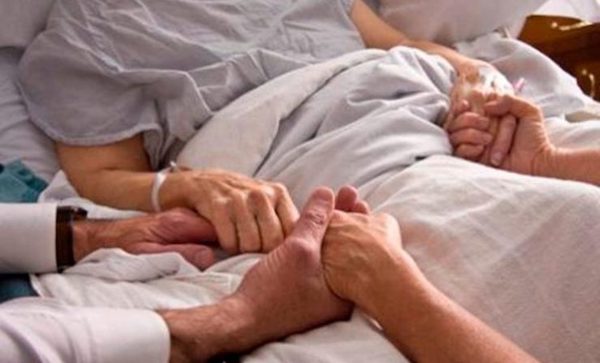Videos Can Clearly State Your End-Of-Life Wishes
[F]or years, Wendy Forman, considered how to make her wishes known if she became horribly ill and couldn’t speak for herself.
She prepared a living will refusing cardiopulmonary resuscitation.
She assembled orders instructing medical personnel to refrain from putting in a feeding tube or placing her on mechanical ventilation.
She told her husband and her daughters “no lifesaving measures” under any circumstances if she were unconscious and incapacitated.
“I was terrified of losing control,” this 70-year-old Philadelphia therapist said.
Then, earlier this year, Forman heard of a Pennsylvania physician who was helping people prepare “video advance directives” — videotaped statements expressing their preferences for end-of-life care.
“I was like ‘Oh my God, it’s like someone was reading my diary — this is exactly what I want,’” she recalled.
Only a few U.S. organizations offer people the chance to create video testimonials, which are meant to supplement and expand upon written living wills and Physician Orders for Life Sustaining Treatment (POLST), now available in 26 states. Do-it-yourself videos are also a convenient option.
One organization doing pioneering work in this field is the Institute on HealthCare Directives, founded by Dr. Ferdinando Mirarchi, the Pennsylvania physician whose work Forman heard about. Others include MyDirectives, a Texas company that helps people create digital advance directives, including personal video and audio statements; Life Messages Media of Wisconsin, which also creates video memoirs and ethical wills, a way to share your values with your family; and In My Own Words, launched by a geriatric psychologist in California.
These organizations hope the videos will help physicians and families interpret and follow written advance directives. About one-third of adults have such end-of-life documents.
“It can give everyone confidence that Mom was competent and knew what she was signing and that no one tricked her by sticking a document in front of her and asking her to sign,” said Thaddeus Pope, director of the Health Law Institute at Mitchell Hamline School of Law in St. Paul, Minn.
Similarly, videos have the potential to ease some of the emotional angst that surrounds end-of-life decision-making. “A family gets to hear Mom saying, in her own words, what she wants, which can be profoundly reassuring,” said Dr. Monica Murphy, medical director of advance-care planning and end-of-life education for Huntsville Hospital System in Alabama.
Formats vary. The Institute on Healthcare Directives’ videos are carefully scripted and usually last 45 to 90 seconds. The goal is to convey essential information to physicians making crucial decisions (perform manual chest compressions? insert a breathing tube?) in time-pressed emergency medical situations.
Mirarchi helps draft scripts after taking a careful medical history, explaining various types of medical situations that might arise, and discussing clients’ goals and values in considerable depth. The cost: a one-time fee of $350, which covers 10 years of follow-up consultations and maintenance, or a setup fee of $50 to $100 accompanied by an annual fee of $35 to $50.
After consulting with the doctor, Forman realized her “do nothing” instructions could prevent her from being treated for medical crises that she might recover from. Now, her video states that if someone witnesses her having heart attack and she can receive medical attention within 15 minutes, resuscitation should be tried.
“I came to see that in my zeal to have my wishes known and respected, I was going to an extreme that didn’t really make much sense,” she said.
Easy accessibility to the videos is essential but may not be practical, yet. The institute houses videos on a server; they can be called up on digital devices via QR codes, or hyperlinked bar codes, that are printed on cards given to clients. (Forman carries hers in her wallet, next to her insurance card.) Passwords are discouraged because these might be a barrier in an emergency. Still, medical personnel aren’t accustomed to searching for cards of this sort.
Videos by MyDirectives clients also tend to be short — between 15 seconds and a minute. The service is free to consumers; the company’s business model relies on partnerships with health care organizations. “The consumer deserves to have their voice heard in electronic health records” that these organizations maintain, said Jeff Zucker, MyDirectives chief executive officer, who hopes that health systems will eventually embed patient videos in those records.
What weight video testimonials will carry in legal conflicts has yet to be determined. Only Maryland allows advance directives to be conveyed in a video format, while New Jersey explicitly recognizes video or audiotapes as supplements to written documents, according to the American Bar Association’s Commission on Law and Aging.
Multimedia advance directives likely will be taken into account in end-of-life disputes, just as a daughter’s statement that “Mom told me this is what she wanted last week” is given consideration, Pope said.
“Since the only thing that constitutes clear and convincing evidence under the law is the written advanced directive, make sure your video is consistent with what’s expressed in these documents,” he advised.
Physicians seem receptive to the videos. According to a study published this year, doctors were more likely to agree about recommended treatments for patients in difficult circumstances after viewing patient videos, as well as evaluating written advance directives.
“Doctors always question whether we’re doing the right thing when it’s just the paper document,” Mirarchi explained. “When you can see a patient expressing what their true intended wishes are, in their own voice, looking into a camera, that’s a very powerful tool.”
For their part, patients seem comfortable speaking before a camera, according to unpublished research conducted by Dr. Angelo Volandes, an internal medicine doctor at Massachusetts General Hospital and a pioneer in creating videos that help patients understand the pros and cons of end-of-life interventions.
Complete Article ↪HERE↩!








